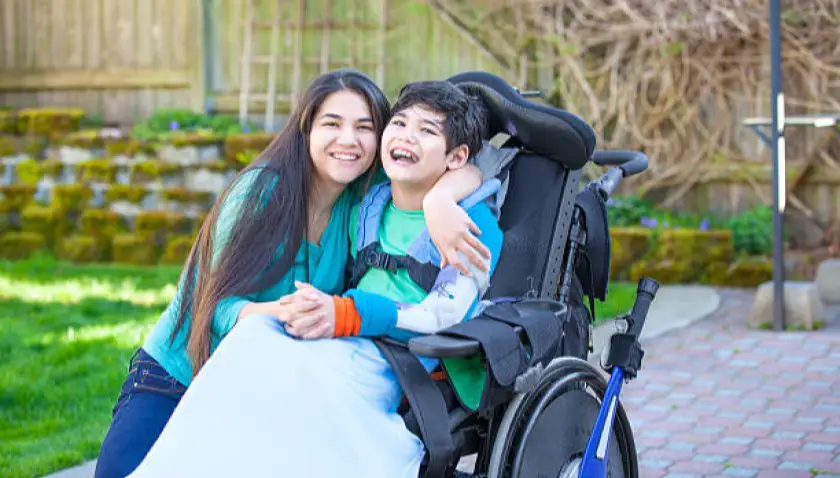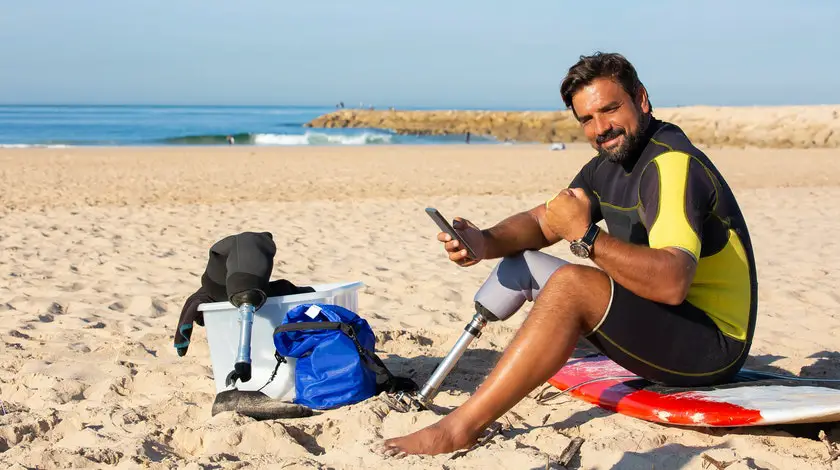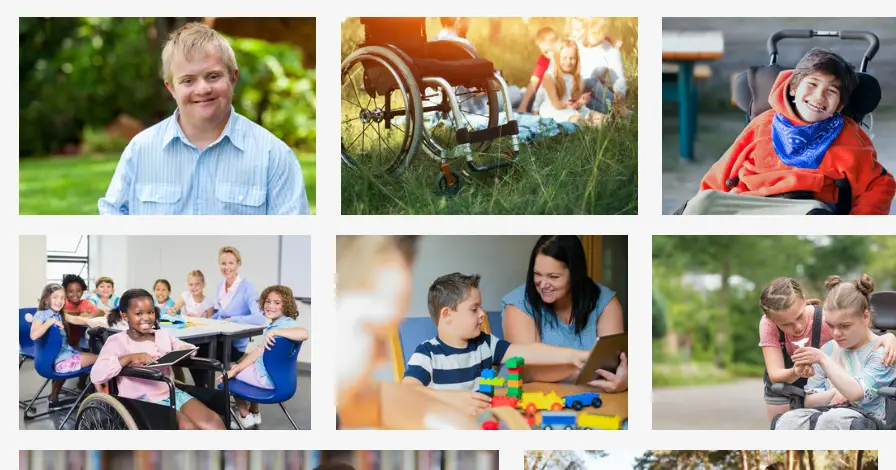It’s a beautiful thing to wrap your hands around someone you love and plant a kiss on their cheek or lips.
This simple gesture isn’t only endearing but spices the good moments you share with your partner. Sometimes, it’s the most affectionate way to bid your loved one goodbye.
But what happens when this person is disabled and in a wheelchair?
You may find it awkward kissing someone in a wheelchair. The position to take and other body expressions to wear makes this simple act seem awkward. It gets worse when you have to do it in public. With the right technique and a few practices, you will enjoy planting kisses on the cheeks of your friend, family member, or partner in a wheelchair.
Table of Contents
The Right Way to Kiss Someone in a Wheelchair
1) Understand the Person’s Disability
Various kinds of disabilities can confine someone to a wheelchair. The common ones are spinal cord injuries, amputations, and paralysis. Understanding the person’s type of disability will make you avoid hurting them while kissing them. It will also allow you to be creative about it.
Some disabilities hinder body movements. You may not want to prevent the person from straining their neck in the process of kissing you. Also, the person’s arms shouldn’t have to stretch much to cuddle you.
A good understanding of the person’s disability will also determine how much creativity you use when kissing them. Since every disabled person is unique, both in personality and psychological response to their disability, your technique should also be unique. It should be in such a way that you don’t hurt the person’s ego or self-esteem.
If you are yet to understand the person’s disability, you should politely ask questions or hint your intention before kissing the person. Most times, the disabled person will take the lead by choosing the most comfortable position before you plant your kiss.
Recommended: Can I be a Foster Parent If I Am on Disability? (Answered)
2) Act Like It’s No Big Deal
You must have heard, read, or observed that disabled persons wish to be treated like others. If you can freely kiss a non-disabled person in public, you should do the same for a disabled person. See them as people using a wheelchair as a means of support and treat them like non-disabled people.
3) Close the Gap
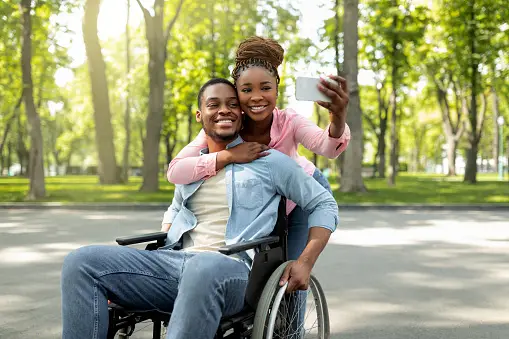
Just the same way you would draw a standing person closer to your body before kissing the person, you should also close the gap between you and the person in a wheelchair before you plant your kiss. Don’t make the person stretch their neck to kiss you.
You will only make the person not look forward to kissing you again.
Assume a comfortable position beside them and bring your face close to them before kissing. Your arm can find its way around the person’s shoulder if you intend to make the kiss a passionate one.
However, for a quick kiss, such as a peck on the cheek, there’s no need to try to get a comfortable position before kissing. Just lean close enough to the person and plant a kiss before you get the chance to think about it.
4) Be Creative
There are various ways to be creative about kissing someone in a wheelchair, especially if the person is your partner. You can help them stand on their feet (if the person’s disability permits) before sharing a kiss.
You can also sit on your partner’s lap while kissing them. Although, only do this if you’re sure your partner can support your weight and if you won’t be causing the person pain by doing so. If possible, reverse the scenario by making your partner sit on your lap while you kiss each other.
Recommended: Wheelchair Accessible Vehicle: Best Cars for Carrying Wheelchairs
Tips to Have a Memorable Kiss
While trying to get the right techniques in kissing someone in a wheelchair, you don’t want it to look like you’re fulfilling an obligation. Kisses are meant to be blissful. And you can achieve such bliss with someone in a wheelchair.
1) Use Your Hands
Your hands can make so much difference in the outcome of your kiss. If the person is your partner, get touchy with their face—stroke their chin, beards, hair, and even neck. Ensure your strokes are soft and gentle. Do this intermittently as you kiss them.
You can also wrap them in a side hug while kissing them. Give your partner’s arm or shoulder a soft massage in such a position. These little touches will make your kiss more memorable.
2) Tease Your Partner a Little
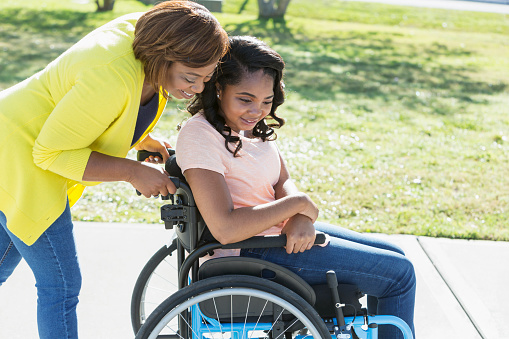
You can tease your partner with a near kiss. It’s as simple as withdrawing your lips just when you’re about to kiss them.
This gesture is similar to what you will do to a non-disabled person when you want them to playfully chase you around before getting a kiss from you as a reward. People in wheelchairs also desire to have such fun. So by playfully dodging a few kisses, you can make your kiss a memorable one.
Recommended: Top 6 Disability Awareness Event Ideas
3) Observe Your Partner’s Body Language
Pay attention to your partner’s body language as you kiss, tease, or get touchy with their body. It will help you know if your kisses are having the desired effect. Your partner may try to be polite by not voicing their discomfort during the kiss.
If you’re unsure of your partner’s reaction, ask questions. It might seem awkward, but it’s safer to do so.
4) Don’t be in Haste
Except it’s a good-bye kiss or just a peck on the cheek or forehead, avoid being in a hurry. First, create a connection between the two of you by sitting at the same height with the person and staring into their eyes. If you must talk, talk gently. Let your partner feel the tension build up between the two of you.
At this point, every kiss you make will be a memorable one.
Creating a connection with someone is very important before doing something as intimate as kissing them. Do everything to make them feel relaxed and safe in your arm before you kiss them.
Check Out Related Posts
